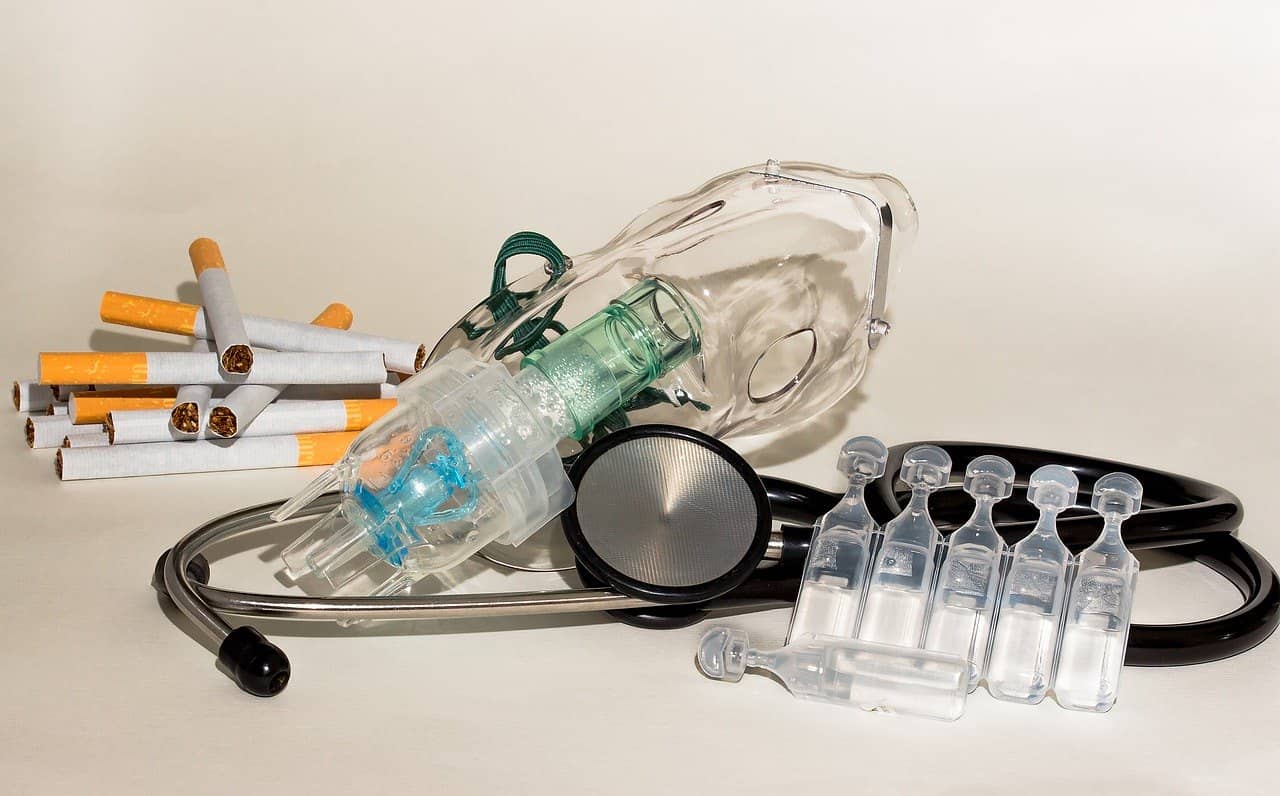
Chronic obstructive pulmonary disease, also known as COPD, is a type of lung disease that affects the ability to breathe. It is characterized by the airways becoming blocked and inflamed, leaving those who suffer from COPD feeling out of breath, unable to inhale or exhale deeply or needing supplemental oxygen to cope.
Types of COPD
According to Mayo Clinic¹, chronic bronchitis and emphysema are two of the most common lung conditions that make up COPD. Individuals who have either of these diseases or both, which can range in severity, are generally diagnosed with COPD.
Chronic bronchitis causes the bronchial tubes to narrow and become inflamed. Emphysema is a condition that causes the alveoli, or the air sacs in the lungs, to deteriorate. This is the part of the lungs where the gas exchange occurs. With milder cases of chronic bronchitis and emphysema, it is possible for someone to have COPD and not know it. However, it will eventually progress and lead to other health problems.
What Can Cause COPD?

- Smoking. The American Lung Association² states that tobacco smoking is the main reason people develop COPD. Cigarette smoke is full of chemicals and toxins that weaken the lung’s ability to fight infections. It also narrows the lung’s air passages, causes swelling and tissue deterioration. All these risk factors combined will result in some form of COPD in smokers.
- Poor Ventilation. As a common problem in developing countries, poor ventilation is another thing that can potentially cause COPD. The fumes produced when people heat their homes and cook can cause poor air quality, leading to COPD.
- AAT Deficiency. In rare cases, COPD can be triggered by a genetic mutation known as the Alpha-1-Antitrypsin deficiency or AAT deficiency. AAT is a protein produced by the liver and designed to protect the lungs. If a person has an AAT deficiency, they are more likely to develop lung issues.
- Age is another potential risk factor for COPD. According to the American Thoracic Society (ATS)³, the vast majority of people who develop COPD are over the age of 40. However, it can develop at a younger age.
Other risk factors for COPD include:
- Regular exposure to toxic air pollution
- Breathing in second-hand smoke
- Working in an environment with chemicals, dust or toxic fumes
- A pattern of recurring respiratory infections
Common COPD Symptoms
Breathing problems are the main symptom that COPD sufferers have. At first, a person’s breathing may only be mildly impacted. However, this will worsen as the COPD progresses. In general, COPD symptoms include:
- Difficulty breathing
- Wheezing
- Frequent coughing
- Tightness in the chest
Additionally, many COPD sufferers produce an excess amount of sputum. This is a thick mucus that the lungs produce when they are damaged. The sputum may be white or clear. If it is yellow or green, you may have an infection and should seek medical attention.
Also, as COPD worsens, people may start to experience symptoms in other parts of their bodies, including leg swelling, weight loss and fatigue.
Potential Complications of COPD
COPD needs to be treated as soon as possible because it can result in serious complications. People who have COPD are more likely to develop the flu, pneumonia and common cold. These infections will be harder to fight if you have COPD. They can also result in severe lung damage.
According to a study published in the U.S. National Library of Medicine⁴, COPD can also increase the risk of heart disease with fatal consequences. However, health experts have more work to do to explain why COPD sufferers are more likely to die from heart disease. Lung cancer is more common in COPD patients.
Furthermore, COPD can affect you mentally. Breathing problems can make it harder for you to work or enjoy everyday activities, putting you at risk for developing depression.
Treatments for COPD
There is no cure for COPD. However, early treatment can potentially prevent it from getting any worse. Recognizing symptoms and catching COPD in its early stages will give you a better chance to manage the effects. If you have COPD, your doctor may suggest:
- Breathing Therapies. Many people with COPD benefit from using supplemental oxygen. There are also medications that can make it easier for you to breathe. Bronchodilators may be recommended to help open up the airways. If you have severe COPD, then you may need to use an inhaler to help reduce inflammation in your lungs.
- Changes to Diet and Exercise. Lifestyle changes can make it easier for you to deal with COPD. For example, regular exercise can strengthen the muscles that control breathing. You should also talk to your healthcare provider about a nutrition plan that can help you heal your lungs. They may refer you to a nutritionist.
- Surgical Intervention. Surgery may be recommended as a last resort if your lungs are severely damaged. The doctor may elect to remove the damaged lung tissue. They may also remove the bullae, which are air sacs that can make it harder to breathe. A lung transplant may be recommended in some cases.
Preventing COPD
COPD can be prevented in many cases. By far, the best thing that you can do to avoid COPD and its damaging effects is to either quit smoking or never start. You will also need to limit your exposure to second-hand smoke, which can be just as harmful as smoking tobacco.
If you know you have risk factors for developing COPD, you should do everything you can to stay on top of your lung health. Getting a preventative lung scan, for example, will let you know the health of your lungs now and if you should seek treatment for any lung-related conditions. Contact our team at Preventative Diagnostic Center in Las Vegas to learn more about our low-dose lung CT scan and how we can help you take control of your health.
Sources:
¹Mayo Clinic. COPD. Retrieved 24 May 2021.
² American Lung Association. COPD Causes and Risk Factors. Retrieved 24 May 2021.
³Fukuchi, Yoshinoksuke. (9 September 2009) The Aging Lung and Chronic Obstructive Pulmonary Disease Similarity and Difference. Retrieved 24 May 2021.
⁴Quint, Jennifer. (2017) The Relationship between COPD and Cardiovascular Disease. Retrieved 24 May 2021.
Sign up to our Newsletter
(We do not share your data with anybody, and only use it for its intended purpose)
